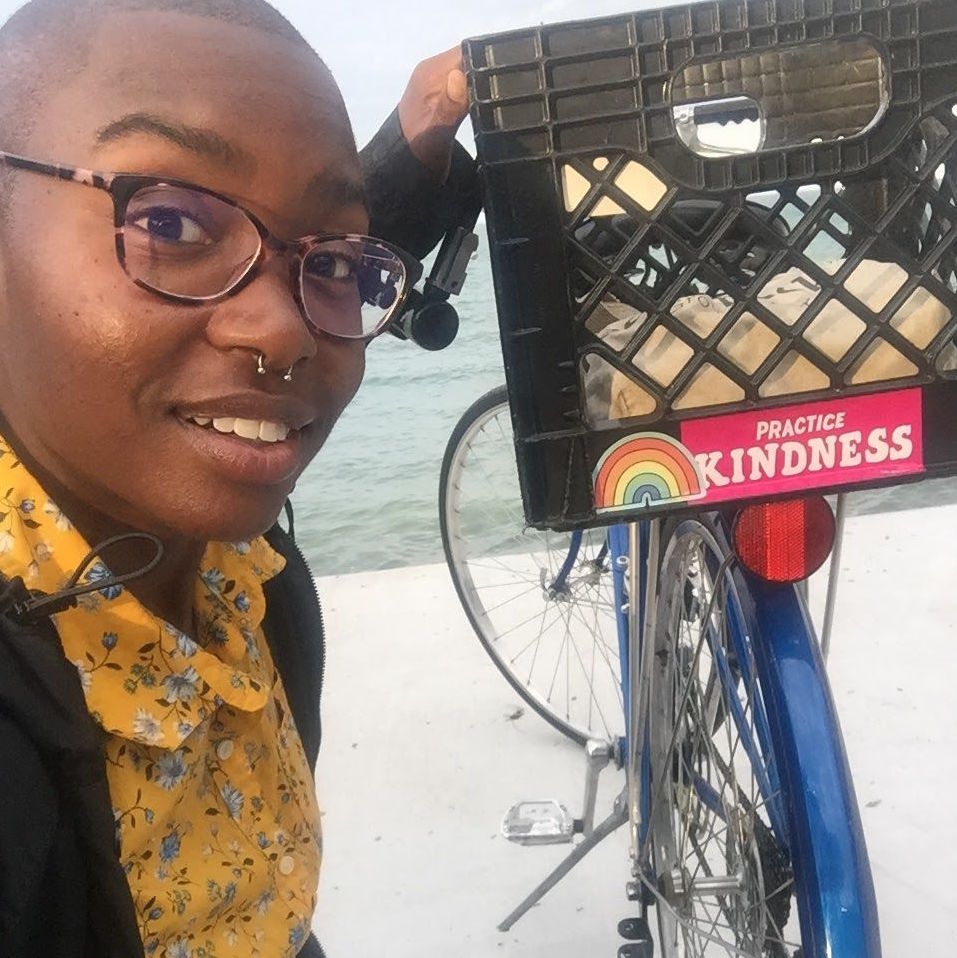
Last week the Chicago Style Committee of the University of Chicago’s Institute of Politics hosted me for a discussion of transportation equity. The committee is made up of U. of C. students who select local speakers to come speak on Chicago-related topics. I was asked a few questions by a student interviewer and took questions from the audience as well.
First the interviewer asked how I came to be interested in transit issues, so I talked about how reading Streetsblog Chicago posts about how it's possible to get around the city fairly easily without a car helped me decide to move here. But I also discussed how my first visit to Chicago quickly showed me that transit inequities exist. I saw how well integrated the Red Line was on the North Side, with stations surrounded by dense retail and housing, versus the placement of the Red Line in the middle of the Dan Ryan Expressway on the South Side. I compared my travel patterns from when I lived in Kenwood to when I lived in Edgewater.
Next I was asked as to what the biggest transit inequities in Chicago are. I spoke of the slow speeds of Chicago buses and how unfair it is to force buses to share the same travel lanes as single-occupancy vehicles. Long wait times between buses are also a problem. In some parts of Chicago a bus comes once or twice an hour, while in other parts of town the headways are every 15 minutes.
The fact that the city has prioritized free storage of empty vehicles over providing safe biking infrastructure compounds the inequities because it deprives people of a safe alternative to the bus or train. Allowing aldermen such a large role in transportation decisions leads to inequities as evidenced by the preventable deaths of people biking on Stony Island, where aldermen Leslie Hairston and Michelle Harris have blocked bike lanes. Some aldermen are more interested in safe streets and sustainable transportation than others, and there is a cost to that. Having safe street infrastructure and quality transit service should not depend on whether or not your alder is supportive.
When asked about Mayor Lightfoot's impact on transit, I noted that she wasn't off to a great start by opposing lower fares and more frequent service for South Side Metra riders. Her concerns about cannibalizing CTA ridership seem disingenuous given that, in my opinion, current lackluster CTA service is a bigger deterrent to growing ridership. As I wrote earlier this month, her ride-hail tax plan, which passed the City Council yesterday, is designed to improve bus service by reducing congestion and funding partial bus lanes, but it does not go far enough to improve bus service. We need a robust network of car-free bus lanes with all-door boarding, and transit-friendly stoplights.
I was grateful when an audience member asked about transit equity as it relates to people with disabilities. I had hoped to touch on that topic in my earlier remarks but forgot to explicitly mention how people with disabilities are impacted by our current transportation system. Given that not every CTA 'L' stop has an elevator, people with disabilities often have to rely on buses, paratransit, or taxis. Transit equity for people with disabilities would include faster bus service, a speedier timeline for elevator access at every 'L' station, and improved paratransit service. I talked about my previous work as a therapist -- some of my clients who used paratransit told me about having to schedule pickups hours in advance in order to make their appointments.
I was surprised so many audience members were interested in how we would pay for transit improvements. I mentioned most of these ideas in my last Streetsblog article about strategies to address climate change, along with charging developers an impact fee whenever they build an oversupply of parking spaces. I pointed out the direct and indirect costs of too much parking for our current transportation system, and noted that in the end there are more benefits to investing in transit and biking versus continuing the status quo.
Lastly, I was asked how people can get involved in making transit equity a reality. I encouraged folks to email, call, or meet with their alder to urge them to support equitable and sustainable transportation initiatives. I suggested they consider joining the Active Transportation Alliance or starting their own organization that advocates for transit and biking improvements. Speaking to your neighbors and friends about your desire to see improved transit and safer biking conditions can make a difference as well.



